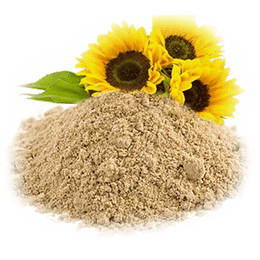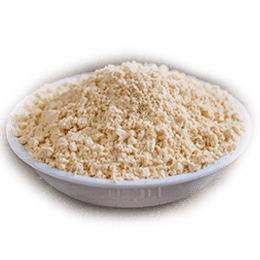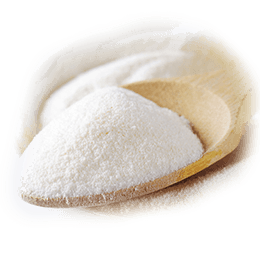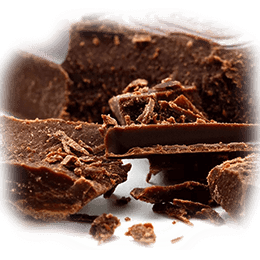Emulsifiers

1- Sunflower Lecithin PRODUCT CODE: E322
Explanation: Sunflower Lecithin is a general term for a variety of oil substances that can be extracted from sunflowers. Sunflower Lecithin extraction takes place by cold pressing, without the use of any chemicals. Sunflower Lecithin has a large number of different phospholipids and antioxidants, along with other volatile compounds that make it a healthy supplement. It has a liquid structure. Some of the most important phospholipids found in Sunflower Lecithin are choline, phosphatidylcholine, phosphatidylinositol and phosphatidylethanolamine. Reasons for using in food industry; color quality, standard phospholipite content, emulsion feature, improving product texture, facilitating separation from the surface, accelerating the distribution of solids in aqueous systems and preserving the taste properties of the product.
Usage areas: Liquid Sunflower Lecithin is an emulsifier used in chocolate, chewing gum, confectionery, margarine, dairy products and cake applications. It is used as a mixer in chocolates and prevents the separation of cocoa and cocoa butter. In the confectionery industry; It is used to reduce viscosity, control confectionery, extend the shelf life of some products, and mix all mixtures thoroughly. In pastry, it reduces the use of oil and eggs, regulates the distribution of the dough, prevents the dough from sticking, balances the fermentation and adds volume. Used in mayonnaise, baby food, body / hand lotions. It is used for softening in chewing gum production, for providing firmness to creamy products in the beverage industry, cheese / milk industry, and for dissolution in coffee milk powder. It is also used in cosmetics, paint, wax, wood coating, rubber, glass and ceramic, paper and printing, asphalt products, metalworking, adhesive, leather. It is used in the production of suspensions and emulsions as an emulsifier in pharmacy technology. It is used in pharmaceutical production to mix various substances with each other, as well as to form the protective layer around the tablets. It enriches the fat and protein in animal feeds and improves the pellet formation. It can also be used as a degreasing additive in plastics, motor oils, an antifoaming agent in gasoline, and dispersing agent and release agent in textile and rubber industries.
2- Soy Lecithin PRODUCT CODE: E322
Explanationa: Soy Lecithin is obtained from soybeans as a by-product during the production of soy flour and oil. Commercially produced lecithin is not allergenic as it is purified. Soy Lecithin is a mixture of osfatidylcholine, glycolipids in general, triglycerides and phospholipids. It has a liquid structure and a darker color compared to Sunflower Lecithin.
Usage areas: Soy Lecithin; It is used as a food additive and in medicine production. It is an emulsifier used in chocolate, chewing gum, confectionery, margarine, dairy products and cake applications. It is used as a mixer in chocolates and prevents the separation of cocoa and cocoa butter. In the confectionery industry; It is used to reduce viscosity, control confectionery, extend the shelf life of some products, and mix all mixtures thoroughly. In pastry, it reduces the use of oil and eggs, regulates the distribution of the dough, prevents the dough from sticking, balances the fermentation and gains volume. Used in mayonnaise, baby food, body / hand lotions. It is used for softening in chewing gum production, for providing firmness to creamy products in the beverage industry, cheese / milk industry, and for dissolution in coffee milk powder. It is also used in cosmetics, paint, wax, wood coating, rubber, glass and ceramic, paper and printing, asphalt products, metalworking, adhesive, leather. It is used in the production of suspensions and emulsions as an emulsifier in pharmacy technology. It is used in pharmaceutical production to mix various substances with each other, as well as to form the protective layer around the tablets. It enriches the fat and protein in animal feeds and improves the pellet formation. It can also be used as a degreasing additive in plastics, motor oils, an antifoaming agent in gasoline, and dispersing agent and release agent in textile and rubber industries.


3- Glyceryl Monostearate - PRODUCT CODE: E 471
Explanation: Glycerol monostearate, commonly known as GMS, is an organic molecule used as an emulsifier from animal and vegetable mono and diglyceride oils. GMS is a flaky powder that is hygroscopic, white, odorless, and has a sweet taste. It is the glycerol ester of stearic acid. It is used as an emulsifier and stabilizer and is soluble in both oil and water. GMS is the most common emulsifier used in the food industry, controlling activities such as emulsification, dispersion, foaming, non-foaming, oil agglomeration.
Usage areas: Glycerine Monosterate; It is used as an emulsifying agent in ready-to-eat foods. GMS, which is included in the formulations of ice cream, starchy products, dairy products, chewing gum, chocolate and other food products; It is used as a softener in textile products and as a lubricant in plastic products. It prevents the development of ice crystals in ice cream and gives a smooth structure. It provides the formation of stable emulsions that do not break down during freezing and extends the shelf life by keeping the ice cream tight and dry without hardening. It causes the formation of a soft and moist structure in bakery products such as bread and cake, gives a white shine and volume, retains moisture, delays the spongy structure and stale, and increases the shelf life of the product. Chocolate also provides a good oil dispersion, including at high temperature, reduces stickiness and segregation during production and storage, reduces crystallization of sugar, decreases flowering and loss of product shine. It prevents products such as caramel and nougat from penetrating the teeth, ensures that the flavorings are better dispersed and stabilized, and acts as a plasticizer in chewing gums. In margarine products, it reduces the stress on the oil and water interfaces, leads to better mouth feel and increases spreadability properties.
4- PGPR PRODUCT CODE : E 476
Explanation: Polyglycerol polyricinoleate (PGPR) is an emulsifier made from glycerol and fatty acids, usually castor beans, but also soybean oil. PGPR is a yellowish, viscous liquid and a strong lipophilic: soluble in fats and oils and insoluble in water and ethanol. PGPR is mainly used in combination with another substance such as lecithin to reduce viscosity. PGPR and lecithin dosages should be adjusted according to the application. It provides the ability to easily discharge by eliminating the formation of small bubbles and empty holes when making chocolate. It helps to produce the desired thickness of chocolate and chocolate products.
Usage areas: It is used in chocolate and chocolate products, low-fat spreads, low-fat spreads, cocoa-based confectionery, spreads, sauces, ice cream mixes, medicine and cosmetic mixtures, oil and water emulsions. It is used at low levels in chocolate and chocolate-like coatings and works by reducing the friction between solid particles in molten chocolate and reducing yield stress so that the chocolate flows more easily. Chocolate and coating can improve the efficiency of chocolate coating processes by better flowing around the coated and dipped shaped products, as they improve the flow properties of the chocolate (especially near the melting point). It can also be used to reduce the amount of cocoa butter needed in chocolate formulations. It is used as an emulsifier in spreads and salad dressings or to improve the texture of bakery products.

